‘Mercurey’ Rising: Four Standout Producers Soar in Burgundy’s Hidden Jewel with Red & White – (7-Bottle Pack $310, Tax Included) + SATURDAY SIPS Returns
Like the Roman god from which this appellation takes its name, Mercurey is often associated with the color red—and that’s because 90% of Mercurey’s vinous output is Pinot Noir. Situated in the heart of the Chalonnaise, Mercurey claims about 1600 acres of land under vine; 1300 are Pinot Noir with the remainder divided between Chardonnay, Pinot Blanc, Pinot Gris and Aligoté.
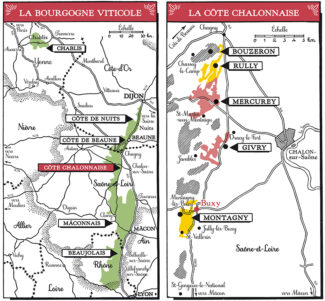
Jean-Pierre Renard, who teaches wine appreciation and tasting at the École des Vins de Bourgogne, describes Mercurey’s orientation as identical to that of the Côte Chalonnaise—north to northeast and south to southwest, with the Golden Valley running down the middle. On the eastern side, vines are planted in calcic soils of Oxfordian limestone, while in the west, crystalline Jurassic rocks are overlain by gravel. Protected from moisture-bearing winds by the hillsides, the vineyards stretch as far as the neighboring village of Saint-Martin-sous-Montaigu. According to local grower Amaury Devillard, Mercurey is a hidden jewel among Bourgogne wines and remains one of the best price/quality wines available: “It was once known as a rustic wine, but the Mercurey of today is completely different. Our wines express fruitiness, cherries especially, with a nice spiciness in the finish.”
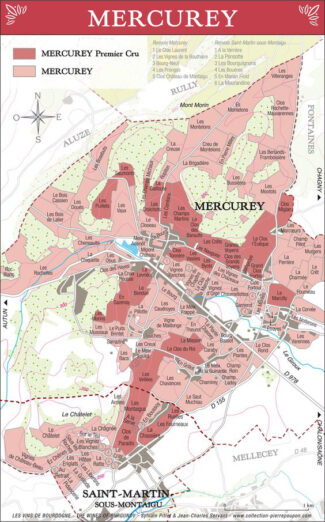 This improvement in quality is in part because many Mercurey winemakers are better than the AOP might suggest. Although up to 15% of Chardonnay, Pinot Blanc and Pinot Gris are permitted as accessory grapes in the red wines, this is rarely practiced, and certainly never in the Premier Cru wines, which make up a quarter of all vineyards and account for 31 officially recognized and delimited climats.
This improvement in quality is in part because many Mercurey winemakers are better than the AOP might suggest. Although up to 15% of Chardonnay, Pinot Blanc and Pinot Gris are permitted as accessory grapes in the red wines, this is rarely practiced, and certainly never in the Premier Cru wines, which make up a quarter of all vineyards and account for 31 officially recognized and delimited climats.
Magical (2019) Vintage: Fresh with an Indulgent Side
Could 2019 rival 1865, arguably the greatest Burgundian vintage of all times? According to Bernard Hervet, former director of Faiveley and Bouchard, it could. The winter was mild but spring was chilly; to some extent, crop yields were limited by frost during bud break and further by a hailstorm on July 7, but the berries that survived were richly concentrated. Late summer heat threatened to produce jammy wines (the antithesis of the Burgundian paradigm, which calls for freshness and tension), but those picked early enough are very well-balanced. In general, the wines display precise fruit with elegant tannins and lively acidity; wines from top estates have excellent aging potential, but nearly all of them are already open and enjoyable.
Ideal (2018) Vintage: Richness, Complexity and Elegance
The upside of a very dry growing season like 2018 is that mildew is minimized along with most of the other diseases that thrive in damp summers. Drought stress played a factor in yield reduction, and growers were forced to call on all their skills to preserve freshness, since the already-concentrated fruit ripened quickly and became more concentrated in the heat. Top houses know that perfect skin ripeness is key to producing superlative Burgundy, and the balance between phenolic ripeness and acid preservation is what sets them apart. Wines from the Chalonnaise turned out particularly well in 2018; many growers produced soaring red wines with textbook balance.
Domaine du Cellier aux Moines
The domain has a history as long and fascinating as any in Burgundy. In 1113 twelve monks left the Abbey of Citeaux and headed south to the Chalonnaise, where Foulques de Reon (the Count of Chalon) gifted them a parcel of cleared land in order to establish a new Abbey. Naturally, being Burgundian monks, they started producing wine, and thus was born the Domaine du Cellier Aux Moines, which is still producing superlative Premier Cru wines to this day.
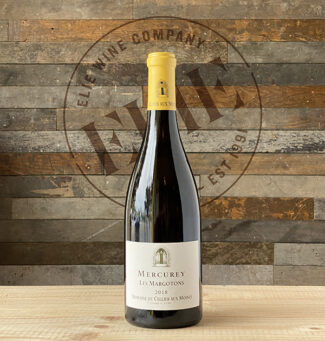
2018 Domaine du Cellier aux Moines ‘Les Margotons’ Mercurey White ($31) is a relative rare beast in Mercurey, 100% Chardonnay. Les Margotons is a single northeast-facing vineyard planted in 1987, about an acre and a half in size, whose white marl soil base and cool, hillside exposures produces distinctly tropical flavors in the wine; crushed pineapple and bright white floral notes are enhanced by toasted hazelnut and vanilla and finishing with peach and crisp minerality.
Domaine Faiveley
Synonymous with fine Burgundy, Domaine Faiveley has been a fixture in Nuits-Saint-Georges since 1825 when négociant Joseph Faiveley began traveling through Europe trading wine for textiles. Today, it is still run by his family; Eve and Erwan Faiveley, and the original estate has extended throughout the Côte de Nuits and into the Côte Chalonnaise and Chablis.
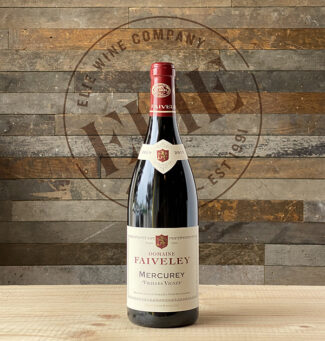 2019 Domaine Faiveley ‘Vieilles Vignes’ Mercurey Red ($43): ‘Vieilles Vignes’ means ‘old vines’ of course, and at thirty-years plus (planted in 1962, 1978 and 1981), these may not be the oldest vines in Mercurey, but they are producing splendidly. After fermentation, the wine is aged for 12 months in French oak barrels (10% of which are new) and show a wine that is round and ripe with vivid cherry notes embedded in a velvety body which remains firm and muscular, yet aligned with poise.
2019 Domaine Faiveley ‘Vieilles Vignes’ Mercurey Red ($43): ‘Vieilles Vignes’ means ‘old vines’ of course, and at thirty-years plus (planted in 1962, 1978 and 1981), these may not be the oldest vines in Mercurey, but they are producing splendidly. After fermentation, the wine is aged for 12 months in French oak barrels (10% of which are new) and show a wine that is round and ripe with vivid cherry notes embedded in a velvety body which remains firm and muscular, yet aligned with poise.
Domaine Adélie
Encompassing 19 southwest-facing acres in the heart of the Chalonnaise, Domaine Adélierepresents the final acquisition of Maison Albert Bichot, and produces both Village and Premier Cru wines. The estate was named for Bichot’s daughter, and the daughter was in turn named for Adélie Land in Antarctica, which the adventure-loving Bichot once visited. Despite his travels, Bichot states without reserve: “I will always feel like a Burgundian. These are my roots.”
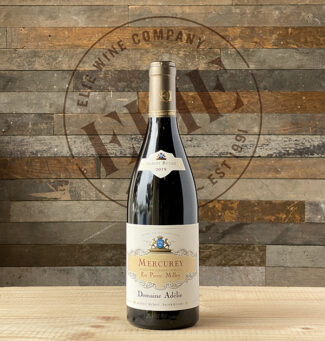 2019 Domaine Adélie, Mercurey Lieu-dit ‘En Pierre Milley’ Red ($50), from 4.9-acre vineyard with 35-year old vines, is a plot-specific wine that displays Mercurey’s sumptuous candy-red, spiced-cherry profile shored up by silky tannins and a long, harmonious finish.
2019 Domaine Adélie, Mercurey Lieu-dit ‘En Pierre Milley’ Red ($50), from 4.9-acre vineyard with 35-year old vines, is a plot-specific wine that displays Mercurey’s sumptuous candy-red, spiced-cherry profile shored up by silky tannins and a long, harmonious finish.
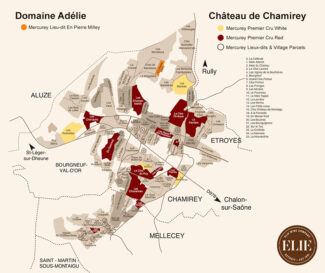
Château de Chamirey
In 1934, the Marquis de Jouennes began to bottle the wines of Château de Chamirey at the domaine; his son-in-law, Bertrand Devillard took over, and expanded the holdings to the present size. Today, Amaury and Aurore Devillard stand proud as the 5th generation of the family to manage the estate. Of the 95 acres that encompass de Chamirey’s vineyards, about 70 are dedicated to Pinot Noir and the rest to Chardonnay; of the total, 21 acres are Premier Cru and about eight represent the acres for which de Chamirey is best known, Monopole wines, including those of La Mission and Clos du Roi. The peculiarly Burgundian term ‘Monopole’ dates back to Napoleonic inheritance laws that saw properties so subdivided (even down to individual rows of vines) that a lone grower was often not able to provide commercial grape quantities to négociants. A ‘Monopole’ wine represents a single area, often a lieu-dit vineyard, controlled by a single winery.
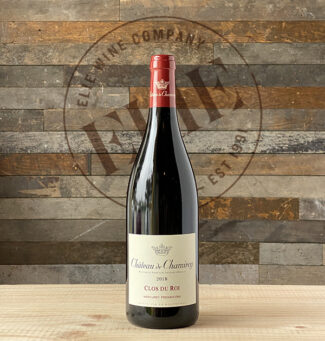 2018 Château de Chamirey Mercurey Premier Cru Clos du Roi Red ($52): To elicit the maximum extraction of color and phenolic compounds, the Pinot Noir is held pre-fermentation between 4 and 6 days, following which a full two-week maceration concentrates tannins and aromatics. Clos du Roi is a southwest-facing, concave slope divided into 4 adjacent plots for a total of 7.6 acres planted between 1970 and 2002. The nose shows expressive strawberry and raspberry notes behind pie spices (cinnamon and nutmeg); the palate is cherries, plums, cassis, licorice and candied citrus peel.
2018 Château de Chamirey Mercurey Premier Cru Clos du Roi Red ($52): To elicit the maximum extraction of color and phenolic compounds, the Pinot Noir is held pre-fermentation between 4 and 6 days, following which a full two-week maceration concentrates tannins and aromatics. Clos du Roi is a southwest-facing, concave slope divided into 4 adjacent plots for a total of 7.6 acres planted between 1970 and 2002. The nose shows expressive strawberry and raspberry notes behind pie spices (cinnamon and nutmeg); the palate is cherries, plums, cassis, licorice and candied citrus peel.
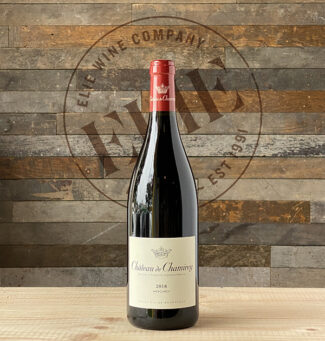 2018 Château de Chamirey Mercurey Red ($31) A composite of 10 small plots in addition to 3 plots of Premier Cru (En Sazenay, Champs-Martin and Clos L’Évêque), the wine exhibits anise, black current and toasty smoke notes compliments a core of candied cherry.
2018 Château de Chamirey Mercurey Red ($31) A composite of 10 small plots in addition to 3 plots of Premier Cru (En Sazenay, Champs-Martin and Clos L’Évêque), the wine exhibits anise, black current and toasty smoke notes compliments a core of candied cherry.
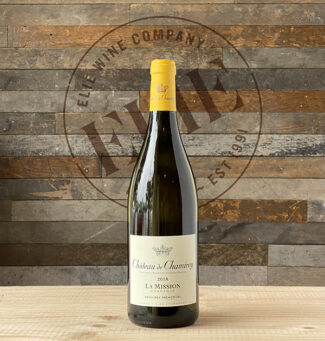 2018 Château de Chamirey Mercurey Premier Cru La Mission (Monopole) White ($54): With vines planted between 1961 and 1997, this five-acre Monopole grows in a mix of sand and clay on a hilltop overlooking Clos du Roi. Grapes are harvested and sorted by hand and fermented in lightly toasted Allier and Voges oak, then aged in 228-liter barrels of the same cooperage. Balanced and nicely dense, the wine shows creamy lime and vanilla notes behind buttered brioche with a long, caramelized finish.
2018 Château de Chamirey Mercurey Premier Cru La Mission (Monopole) White ($54): With vines planted between 1961 and 1997, this five-acre Monopole grows in a mix of sand and clay on a hilltop overlooking Clos du Roi. Grapes are harvested and sorted by hand and fermented in lightly toasted Allier and Voges oak, then aged in 228-liter barrels of the same cooperage. Balanced and nicely dense, the wine shows creamy lime and vanilla notes behind buttered brioche with a long, caramelized finish.
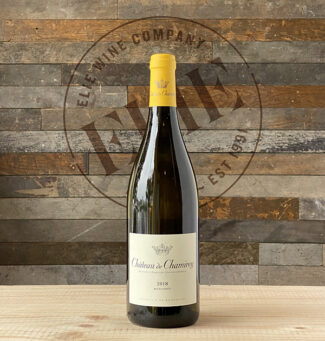 2018 Château de Chamirey Mercurey White ($31):Raised from 6 different plots across the village, the diversity and typicity of each plot reflect their richness in the wine. A floral nose redolent of white springtime blossoms; fresh, vibrant, and crisp with discreet flavors of ripe peaches, light spice and a nice backbone of acidity.
2018 Château de Chamirey Mercurey White ($31):Raised from 6 different plots across the village, the diversity and typicity of each plot reflect their richness in the wine. A floral nose redolent of white springtime blossoms; fresh, vibrant, and crisp with discreet flavors of ripe peaches, light spice and a nice backbone of acidity.

At long last, we announce the return of Saturday Sips with a tasting of Domaine de la Ferté (Givry 2019).
Formerly the epicenter of wine production in the Côte Chalonnaise, Givry was the preferred source for King Henri IV’s wines in the 16th Century, and still represents some of best values in the Côte. Domaine de la Ferté is one of five estates owned by the Devillard family (which also includes Château de Chamirey, above); Ferté covers a relatively small area of six acres spread over three plots, two in the village appellation of Clos Mortière and one in Servoisine Premier Cru. It thrives under the direction of enologist and ‘chef de culture’ Enrico Peyron.
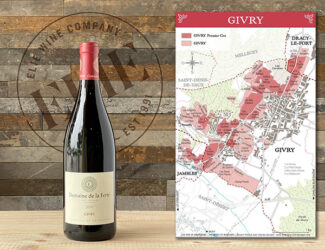
As always, we are committed to conduct the tasting in the safest way possible. We will provide glasses, but highly encourage guests to bring their own.
- - -
Posted on 2021.10.07 in Côte Chalonnaise, Mercurey, France, Saturday Sips Wines, Burgundy, Wine-Aid Packages
Featured Wines
- Notebook: A’Boudt Town
- Saturday Sips Wines
- Saturday Sips Review Club
- The Champagne Society
- Wine-Aid Packages
Wine Regions
Grape Varieties
Albarino, Albarín Tinto, Alicante Bouschet, Aligote, Altesse, Arbanne, Auxerrois, Barbarossa, barbera, Biancu Gentile, Bonarda, bourboulenc, Cabernet Sauvignon, Calvi, Carcajolu-Neru, Chenin Blanc, Cinsault, Clairette, Cortese, Corvinone, Cot, Counoise, Dolcetto, Erbamat, Fiano, folle Blanche, Fromenteau, Fumin, Gamay, Garganega, Garnacha Tintorera, Gewurztraminer, Godello, Graciano, Grenache Blanc, Groppello, Jacquère, Juan Garcia, Lladoner Pelut, Loureira, Macabeo, Maconnais, Malbec, manseng, Marcelan, Marsanne, Marselan, Marzemino, Melon de Bourgogne, Mencía, Merlot, Montanaccia, Montepulciano, Montònega, Moscatell, Mourv, Mourvèdre, Muscadelle, Muscat, Natural, Nebbiolo, Niellucciu, Palomino, Parellada, Patrimonio, Pecorino, Pedro Ximénez, Persan, Petit Meslier, Pineau d'Aunis, Pinot Auxerrois, Pinot Blanc, Pinot Gris, Pinot Meunier, Pinot Noir, Pouilly Fuisse, Pouilly Loche, Riesling, Rousanne, Sagrantino, Sangiovese, Sauvignon, Sauvignon Blanc, Sciacarellu, Semillon, Serine, Sparkling, Sumoll, Tempranillo, Teroldego, Timorasso, Trebbiano, Trebbiano Valtenesi, trepat, Ugni Blanc, Verdicchio, Vermentino, Viognier, Viura, Xarel-loWines & Events by Date
- September 2025
- August 2025
- July 2025
- June 2025
- May 2025
- April 2025
- March 2025
- February 2025
- January 2025
- December 2024
- November 2024
- October 2024
- September 2024
- August 2024
- July 2024
- June 2024
- May 2024
- April 2024
- March 2024
- February 2024
- January 2024
- December 2023
- November 2023
- October 2023
- September 2023
- August 2023
- July 2023
- June 2023
- May 2023
- April 2023
- March 2023
- February 2023
- January 2023
- December 2022
- November 2022
- October 2022
- September 2022
- August 2022
- July 2022
- June 2022
- May 2022
- April 2022
- March 2022
- February 2022
- January 2022
- December 2021
- November 2021
- October 2021
- September 2021
- August 2021
- July 2021
- June 2021
- May 2021
- April 2021
- March 2021
- February 2021
- January 2021
- December 2020
- November 2020
- October 2020
- September 2020
- August 2020
- July 2020
- June 2020
- May 2020
- April 2020
- March 2020
- February 2020
- January 2020
- December 2019
- November 2019
- October 2019
- September 2019
- August 2019
- July 2019
- June 2019
- May 2019
- April 2019
- March 2019
- February 2019
- January 2019
- December 2018
- November 2018
- October 2018
- September 2018
- August 2018
- July 2018
- June 2018
- May 2018
- April 2018
- March 2018
- February 2018
- January 2018
- December 2017
- November 2017
- October 2017
- September 2017
- August 2017
- July 2017
- June 2017
- May 2017
- April 2017
- March 2017
- February 2017
- January 2017
- December 2016
- November 2016
- October 2016
- September 2016
- August 2016
- July 2016
- June 2016
- May 2016
- April 2016
- March 2016
- February 2016
- January 2016
- December 2015
- November 2015
- October 2015
- September 2015
- August 2015
- July 2015
- June 2015
- May 2015
- April 2015
- March 2015
- February 2015
- January 2015
- December 2014
- November 2014
- October 2014
- September 2014
- August 2014
- July 2014
- June 2014
- April 2014
- March 2014
- February 2014
- January 2014
- December 2013
- November 2013
- October 2013
- September 2013
- August 2013
- July 2013
- June 2013
- May 2013
- April 2013
- March 2013
- February 2013
- January 2013
- December 2012
- November 2012
- October 2012
Search



